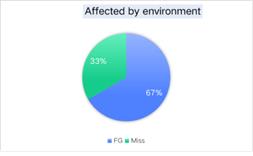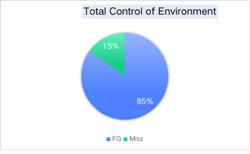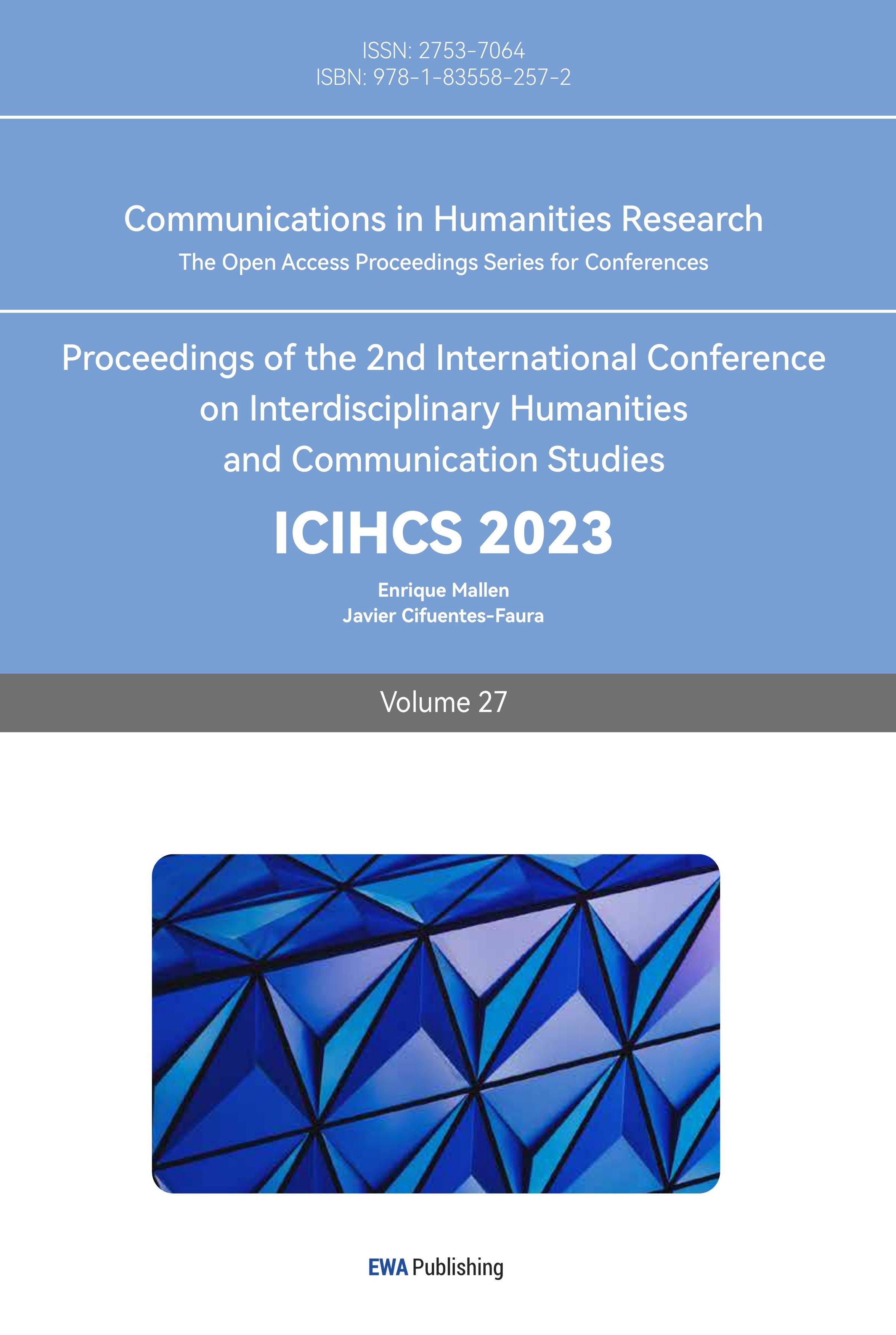1.Introduction
People cannot deny that sports are influenced by the surrounding environment both directly and indirectly. For example, most people from my hometown, Beijing, who love sports will certainly notice that Beijing Guoan—the professional soccer team that plays in the Chinese Super League—has yellower and shorter grass on their home field in the summer than in the winter. This has the potential to affect the pace of the game in different seasons. Basketball fans will remember the memorable game of Los Angeles Lakers versus Sacramento Kings, the stadium was on fire, and the game was played in smoke. Environment not only has an impact on large-scale sports events such as the Super Bowl and the World Cup but also sways small games held by schools or communities[1]. In other words, sports are significantly related to the environment, and the relationship between sports and the environment through four different levels of sports and environment interface is complex. There are multiple types of sport-environment affects and conditions that influence both the sporting world and environment. Sports have the potential to both cons and pros in the environment.
2.Four categories of sport and environment influence and condition the sports
Sports that are played indoors, such as table tennis and basketball, fall under the category of total control of environmental conditions. In these sports, all conditions are controlled, such as lighting, temperature, and the court. In this way, athletes can focus on their skills and techniques instead of being effect by external surrounding factors. For example, a controlled environment ensures that a table tennis ball bounces on the right track and makes its trajectories predictable. The precision and control of the total control of sports allow machines to examine ball speeds and spin rates. Outstanding players can generate ball speeds over 100 km/h and spin rates of estimating 9,000 rotations per minute (RPM). The precision can be accomplished because there is total control of the environment. Likewise, a controlled basketball court makes sure that the basketball is stable when players dribble at a high speed and take shots accurately. From figure1, NBA players have a field goal percentage ranging from 60% to 70%. As shown in figure2, Professional NBA players have a field goal percentage ranging from 80% to 90% without interference from the environment or other factors. So, the basketball court is devoted to eliminating factors that affect players. It creates total control of the environment. Athletes in conditions of total control can rely on their sports performance without being affected by their surroundings.

Figure 1: A basketball athlete’s performance on an outdoor court

Figure 2: The same basketball athlete’s performance in a stadium
Sports in partial control of environmental conditions, such as football, soccer, and baseball, are played on a designated field or court. Although the playing area remains standardized, these sports have more variation in environmental conditions. In football, for example, weather conditions will influence the movement of the ball, players’ traction, and the potential of getting injuries. Studies have discovered the type of playing surface impacts the pace of the game and the risk of injury. For example, games on grass tend to have a relatively slower tempo compared to those on artificial surfaces. Furthermore, studies have revealed that the potential of anterior cruciate ligament (ACL) tears, is higher on artificial turf compared to natural grass because of its differences in hardness. In tennis, weather will affect the balls’ speed and bounce. Athletes have to adapt to different conditions and develop multiple solutions in their “play books.” Historical data from Grand Slam tournaments reveals variations in the performance of a player deoending on the court surface. For example, players with relatively great skills on offense tend to do better on grass courts, while players with great defensive abilities often do well on clay courts.
Sports such as skiing and golf are played outdoors, which are called framed environmental conditions. Environmental conditions are essential to the sport, yet are still modifiable. Some elements are introduced on purpose to create challenges, reaching a balance between humans and nature. The presence of snow and necessary territory is needed in skiing. This limitation can be solved through man-made snow. Skiers require a combination of balance and physical endurance with master skills. The International Ski Federation (FIS) proposes strict regulations on the preparation of slopes for the competition of skiing events. Alpine skiing competitions’ data present the impact of different snow types on race times and the performances of athletes. Packed powder snow usually leads to a faster race pace. On the other hand, icy conditions can lead the competition more challenging. Another example is how a golf course is designed with multiple hazards and risks in order to challenge the players’ skills. Golfers must have the strength to adapt to different terrains. Golfers need to control the track of a golf ball precisely and accurately. Data from the Professional Golfers' Association (PGA) Tour demonstrates how course design impacts players’ performance. On a course with strategically placed hazards the average score may be higher compared to a more forgiving course layout.
Sports such as surfing, sailing, ocean swimming, and mountain climbing, which take place in natural environments, where the conditions are unpredictable and cannot be controlled by humans, are in the category no control of the environment. Wave patterns and water temperature are factors in surfing and ocean swimming,. Sailing is significantly affected by wind and storm. Moreover, surfers need critical information to predict the height and periods of waves, the direction of wind, and tide conditions. Surfers can use these data to select a fit time and location to surf, instead put themselves in unknown areas facing dangers. Mountain climbing requires strong physical and mental preparation to overcome unpredictable weather and cliffs. Accurate weather forecasting is the most important information that a mountain climber needs to know. In this way, he or she can plan for safe tracks to climb. Real-time weather data helps climbers to make informed decisions and avoid extreme conditions. What’s more, athletes must establish mental and physical resilience to adapt to difficulties, and anticipate potential risks to prevent danger. These are essential qualities for athletes who want to be outstanding when it comes to no control of the environment.
These four categories of the sport-environment interface present different ways in which environmental conditions impact and condition the sports that are played. From indoor sports with total control to outdoor sports with no control at all over the environment, unique challenges and plays are set for athletes who participate in these sports. Getting a better understanding of the interplay between sports and how environments can affect athletes leads to fair competition, and stable practices in the big world of sports. With the rapid development of sports, it is vital to attain a balance between the preservation of external environments and human intervention. That’s the best way to ensure the longevity of sporting activities.
3.Sport events influence the environment both positively and negatively
Sports can have an influence on the environment as well. The impact of sports on the environment is tremendous and complex. Sports events can have significant negative effects on the environment, especially when large-scale events are not organized well[2]. For example, the Olympic Games leave a massive carbon footprint when they are held every four years. The Olympic games are one of the most important sports events that almost every country in the world participates in. It comes with a significant carbon footprint to the environment. Hosting the Olympics requires huge construction projects that release high concentrations of carbon dioxide, including stadiums, accommodations for athletes and audiences, and infrastructure such as roads, railways, and bridges. The construction process can lead to huge environmental problems such as deforestation, habitat destruction, and increased greenhouse gas emissions[3].
Sports events can also generate a lot of waste. Large-scale sports events, such as the Super Bowl or the FIFA World Cup, can attract huge crowds and generate a terrifying amount of waste. Wasted food, plastic cups, and products lead to the accumulation of waste in and around the stadium. Most of the waste does not end up being properly disposed of and recycled but instead ends up in landfills. Then there will also be massive water usage. For example, golf tournaments need a constant flow of water usage to maintain lush, green fairways. For the regions that are facing drought, this excessive water usage can restrict local water resources and influence nearby citizens. What’s more, the chemicals used on the golf court can leach into water systems which will cause pollution in the water and threaten aquatic life. Most people do not know that large-scale sports events also generate noise and air pollution. Motor-sports events, such as Formula One races, rally races, and motorbike competitions, release high levels of noise and fossil fuels. The loud engines and exhaust fumes can directly affect the environment, wildlife, and nearby communities.
Besides that, there will be events that may impact local ecosystems. For winter sports resorts. Like ski resorts, can significantly affect the ecosystem of mountain. soil erosion is the primarily effect to this ecosystem. Disturbance to wildlife is the second. Sport events also will leave dozens of single-use plastics. Take marathon races as an example. Marathon races often include the distribution of single-use plastic water bottles on the ground and other items dispose all the way to the finish line. Last but not least, unsustainable transportation is also a huge negative factor. At international sports events, athletes, audiences, and staffs need to travel from place to place. The amount of carbon dioxide that will be released from air travel and other transportation is unimaginable. Although sports events undoubtedly provide excitement and joy to athletes and audiences, they can also have direct or indirect negative consequences for the vulnerable environment. The examples provided reveal how large-scale sports events can damage the environment. To minimize these negative impacts, it is critical for organizations, athletes, and audiences to prioritize protecting the environment[4].
In contrast, sports events and organizations also have the chance to make people aware of environmental problems, so that they can promote eco-friendly practices among athletes and audiences, and improve the policy on managing events. As is often the case, a huge sports event needs audiences, a court, players and staff, and goods. The sports organizations can possibly imagine how much energy use, how many plastic cups, and even the fireworks during the celebration are counting in damaging environments. However, it may be a good thing to be aware of. Some sports organizations take action to help reduce environmental conservation and design modern sports facilities with eco-friendly materials. They may use energy-efficient lighting, technologies that can use for water-saving too. For instance, The National Hockey League Green Program in the NHL concentrates on making their clubs harmless to the environment including tree planting, water restoration, and food recovery. Sporting events can even promote eco-tourism and encourage people to feel the beauty of natural landscapes[5]. To propose specific policies to promote reducing waste generation, water usage, and energy consumption. In 2020, Tokyo reached a goal of making zero carbon and waste during the Olympic Games by using renewable sources, reducing packaging of materials, and even making medals from recycled materials. Likewise, the home court of Beijing Guoan does not allow any bottles in the stadium, not only preventing audiences from throwing bottles on the field but also preventing trash from being left in the stadium.
4.Conclusion
To sum up, the relationship between sport and the environment is complementary. The environment influences sports through different conditions in four basic categories. Meanwhile, sports events can also affect the environment negatively or positively. Both aspects are associated, and continuous practices are imperative to observe the natural world for future generations. Further researches should concentrate on athletes’ performance when facing different surrounding environment. Take soccer athletes as an example. Researchers should measure following data for one player: success passing, possession percentage, shots on goal, offside and fouls either facing rainy or not. A game has to be lopsided if two teams’ players have the similar data, so surrounding environment can be the only independent factor that influence players, which can conclude the result of how environment influence one’s performance. However, for the forth category sports, it can be difficult to be observed for researchers since it have no control of the environment. Anything can be a factor that influence an athlete’s performance, which means the surrounding climate can not be the only independent factor. This will give a inaccurate conclusion due to the result cannot be observed or examined directly. This will be the biggest challenge for the future research.
References
[1]. Falt, Eric. “Sport and the Environment.” Environmental Health Perspectives, vol. 114, no. 5, 2006, pp. A268–69. JSTOR,
[2]. “IOC Guide to Sport, Environment and Sustainable Development - Olympic News.” International Olympic Committee, 7 Jan. 2022, olympics.com/ioc/news/ioc-guide-to-sport-environment-and-sustainable-development
[3]. Dowdelll, Trevor. “Measuring Sports Class Learning Climates: The Development of the Sports Class Environment Scale.” Learning Environments Research
[4]. Müller, Martin, et al. “An Evaluation of the Sustainability of the Olympic Games.” Nature Sustainability, vol. 4, no. 4, 1 Apr. 2021, pp. 340–348, www.nature.com/articles/s41893-021-00696-5, https://doi.org/10.1038/s41893-021-00696-5.
[5]. Zhao, Hai-long. “Research on the Environmental Science and Sustainable Development the Perspective of Geological Ecology.” Journal of King Saud University - Science, Jan. 2023, p. 102564, https://doi.org/10.1016/j.jksus.2023.102564.
Cite this article
Zhang,Z. (2024). Categories of Sport-Environment and Condition of the Sports. Communications in Humanities Research,27,236-240.
Data availability
The datasets used and/or analyzed during the current study will be available from the authors upon reasonable request.
Disclaimer/Publisher's Note
The statements, opinions and data contained in all publications are solely those of the individual author(s) and contributor(s) and not of EWA Publishing and/or the editor(s). EWA Publishing and/or the editor(s) disclaim responsibility for any injury to people or property resulting from any ideas, methods, instructions or products referred to in the content.
About volume
Volume title: Proceedings of the 2nd International Conference on Interdisciplinary Humanities and Communication Studies
© 2024 by the author(s). Licensee EWA Publishing, Oxford, UK. This article is an open access article distributed under the terms and
conditions of the Creative Commons Attribution (CC BY) license. Authors who
publish this series agree to the following terms:
1. Authors retain copyright and grant the series right of first publication with the work simultaneously licensed under a Creative Commons
Attribution License that allows others to share the work with an acknowledgment of the work's authorship and initial publication in this
series.
2. Authors are able to enter into separate, additional contractual arrangements for the non-exclusive distribution of the series's published
version of the work (e.g., post it to an institutional repository or publish it in a book), with an acknowledgment of its initial
publication in this series.
3. Authors are permitted and encouraged to post their work online (e.g., in institutional repositories or on their website) prior to and
during the submission process, as it can lead to productive exchanges, as well as earlier and greater citation of published work (See
Open access policy for details).
References
[1]. Falt, Eric. “Sport and the Environment.” Environmental Health Perspectives, vol. 114, no. 5, 2006, pp. A268–69. JSTOR,
[2]. “IOC Guide to Sport, Environment and Sustainable Development - Olympic News.” International Olympic Committee, 7 Jan. 2022, olympics.com/ioc/news/ioc-guide-to-sport-environment-and-sustainable-development
[3]. Dowdelll, Trevor. “Measuring Sports Class Learning Climates: The Development of the Sports Class Environment Scale.” Learning Environments Research
[4]. Müller, Martin, et al. “An Evaluation of the Sustainability of the Olympic Games.” Nature Sustainability, vol. 4, no. 4, 1 Apr. 2021, pp. 340–348, www.nature.com/articles/s41893-021-00696-5, https://doi.org/10.1038/s41893-021-00696-5.
[5]. Zhao, Hai-long. “Research on the Environmental Science and Sustainable Development the Perspective of Geological Ecology.” Journal of King Saud University - Science, Jan. 2023, p. 102564, https://doi.org/10.1016/j.jksus.2023.102564.









